How To Master The Romanian Deadlift And Unlock Your Leg Muscles
Often overlooked, Romanian deadlifts are the key to bigger, stronger legs
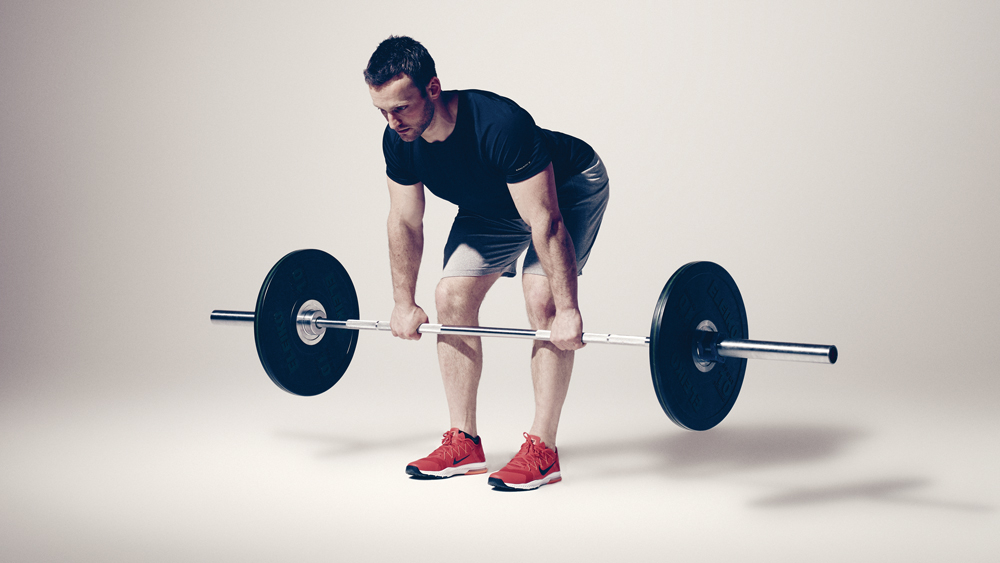
The classic deadlift is weightlifting at its best: a simple, effective move that should have a spot in the line-up of anyone who has a weights routine. The Romanian deadlift is a variation that also strengthens muscles throughout your posterior chain – the muscles that run down the back of your body from your neck to your heels – and has advantages for beginners working up to the deadlift proper, as well as anyone who wants to develop the flexibility, strength and power of their hamstrings. Because you’ll need to lighten the load compared with a deadlift, it’s a variation worth knowing in case you’re working out somewhere with limited equipment.
To help you get to grips with the Romanian deadlift, we spoke to Wahoo Sports Science’s expert strength coach Jeff Hoobler.
Romanian Deadlift Benefits
Everyone should deadlift – yeah, we said it – but not everyone is ready to deadlift right away. “The Romanian deadlift, in my opinion, is easier to execute correctly than the conventional deadlift,” says Hoobler. “If someone was learning to deadlift, I would start them with this move, with the bar beginning on a rack. This way, they can eccentrically load first, where they’re stronger and have more control.” The eccentric phase of the Romanian deadlift is the portion of the lift where the bar is being lowered to the floor. People are usually stronger in the portion of a lift.
However, the Romanian deadlift isn’t just a deadlift lite. It also has some serious muscle- and strength-building credentials on its CV.
“It’s a posterior chain move, so it’s moving all the muscles on the back side of your body, primarily the hamstrings, glutes and lower back,” says Hoobler. “But the fact that you’re using your arms to hold the load means you’re getting load distribution all through your skeleton, which is excellent for your health.
“In general, most people have a deficit in their posterior chain, so this is one of the key moves I go for, whether it’s with a barbell, dumbbell or even a single-leg variation.”
How To Do The Romanian Deadlift
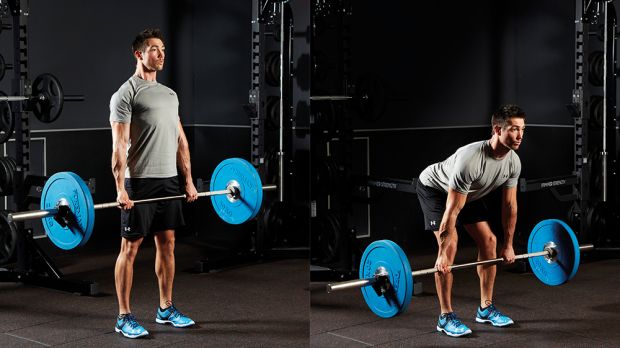
Stand holding a barbell in front of your thighs with your hands shoulder-width apart and palms facing you. You can get into this start position by deadlifting the barbell from the floor, or set up the barbell at knee height in a power rack and perform a rack pull, then step out of the rack.
Get the Coach Newsletter
Sign up for workout ideas, training advice, reviews of the latest gear and more.
The short version of the form guide is that you push your hips back to lower the barbell, keeping it close to your legs, then drive your hips forwards to return to the start.
Here’s Hoobler with the finer points of the movement. “Let your hips unlock and push them backwards to begin the movement, keeping your spine neutral throughout,” says Hoobler. “The hips need to unlock before the knees. This means sending the hips backwards first, then unlocking [or slightly softening] the knees as you lower the weight.”
Your ability to keep the bar close to your legs “is linked to the unlocking of the hips,” says Hoobler. “The further your hips go back, the closer you can keep the bar to your body. From a hang position, you should let the bar graze your thighs as you lower it. Stop when your hamstrings will no longer let you move without further bending your knees or spine – then you come back up.”
Romanian Deadlift FAQs
What’s the difference between the deadlift and Romanian deadlift?
To perform the deadlift, you lift the barbell from the floor, rather than beginning in the hang position and lowering as with the Romanian deadlift. How does that essential difference change the demands on your body?
“The biggest difference is you’re going to have much more flexion at the knee with the traditional deadlift,” says Hoobler, “where the Romanian deadlift only has a slightly unlocked knee.”
“Both exercises engage the posterior chain, but because there’s less hinging in the traditional deadlift you’re going to get a bit more quad involvement. You’re still hitting the hamstrings and glutes as co-contractors, but the vertical direction of the lift means there’s more quad in there.”
Another key difference is the mobility you need to perform the deadlift. “You need a fairly good range of motion at the hip, knee and ankle to get into the start position for the deadlift. If you lack good mobility, particularly at the ankle, you are more likely to compromise your back.”
Do Romanian deadlifts build your back?
In short, yes. “Fundamentally, you’re going to load or strain all the muscles in the posterior chain with the Romanian deadlift,” says Hoobler. But you’re not here for the short answer.
“How heavy the load your lifting is, and how much time your muscles are under tension during each set, is going to determine the response to that stimulus,” says Hoobler.
“It’s hard to simplify that, but for strength, you’re looking at seven to 11 reps done at a tempo of two counts on the eccentric, one on the concentric. That’s a 30-second set, which is a good strength stimulus providing the load is appropriate – 70-85% of your one-rep max.”
Romanian Deadlift Variations
Single-leg Romanian deadlift
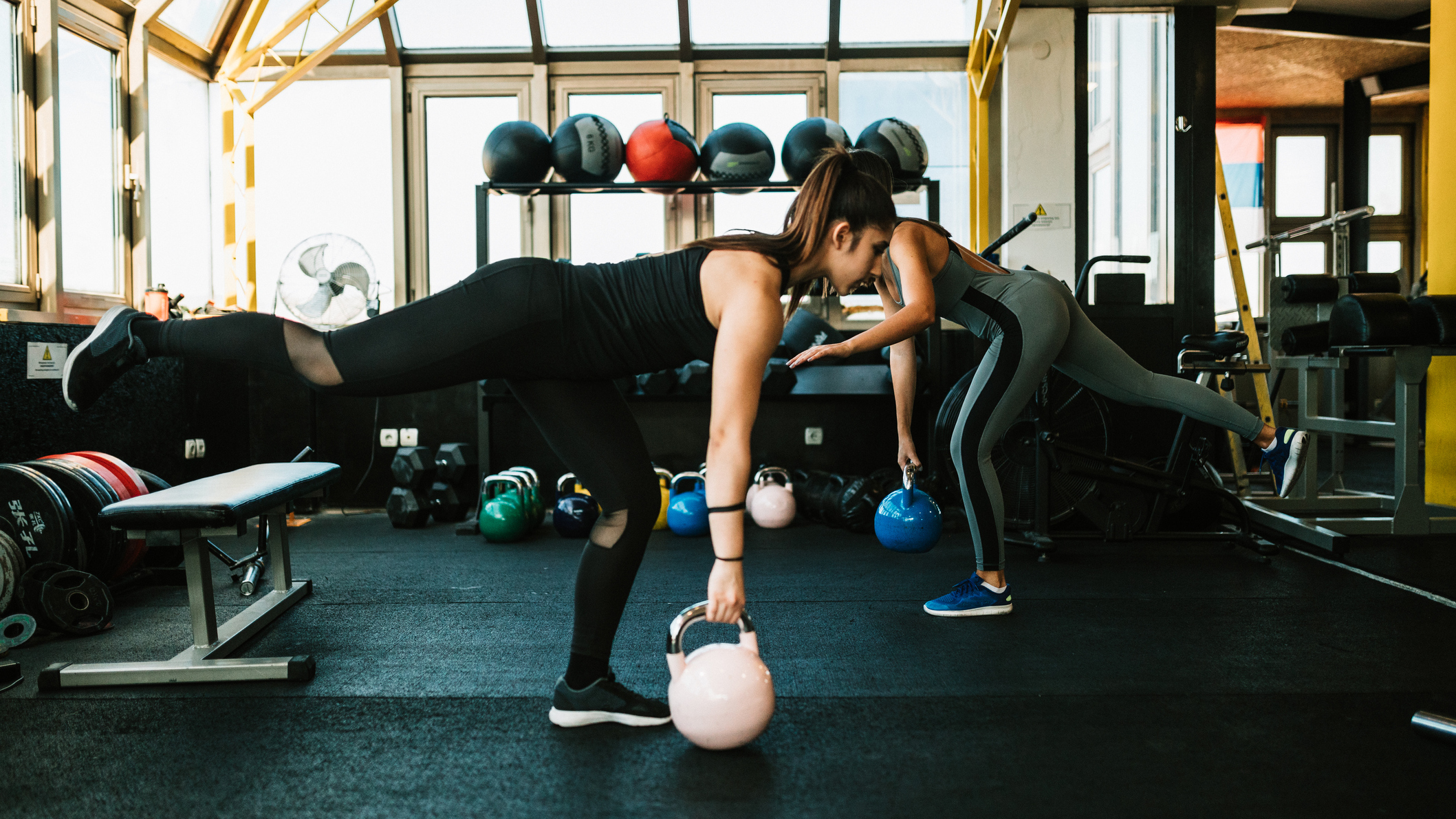
This variation can be performed with a barbell held with your hands shoulder-width apart, two free-weights such as dumbbells or kettlebells which makes it easier to retract the shoulder blades, or one free-weight.
Stand one leg and lean forward with a slight bend in the knee. Keeping your back straight at all times, lower with a slow and controlled motion until you feel the stretch in your standing leg’s hamstring, then return to the start.
Dumbbell split-leg Romanian deadlift
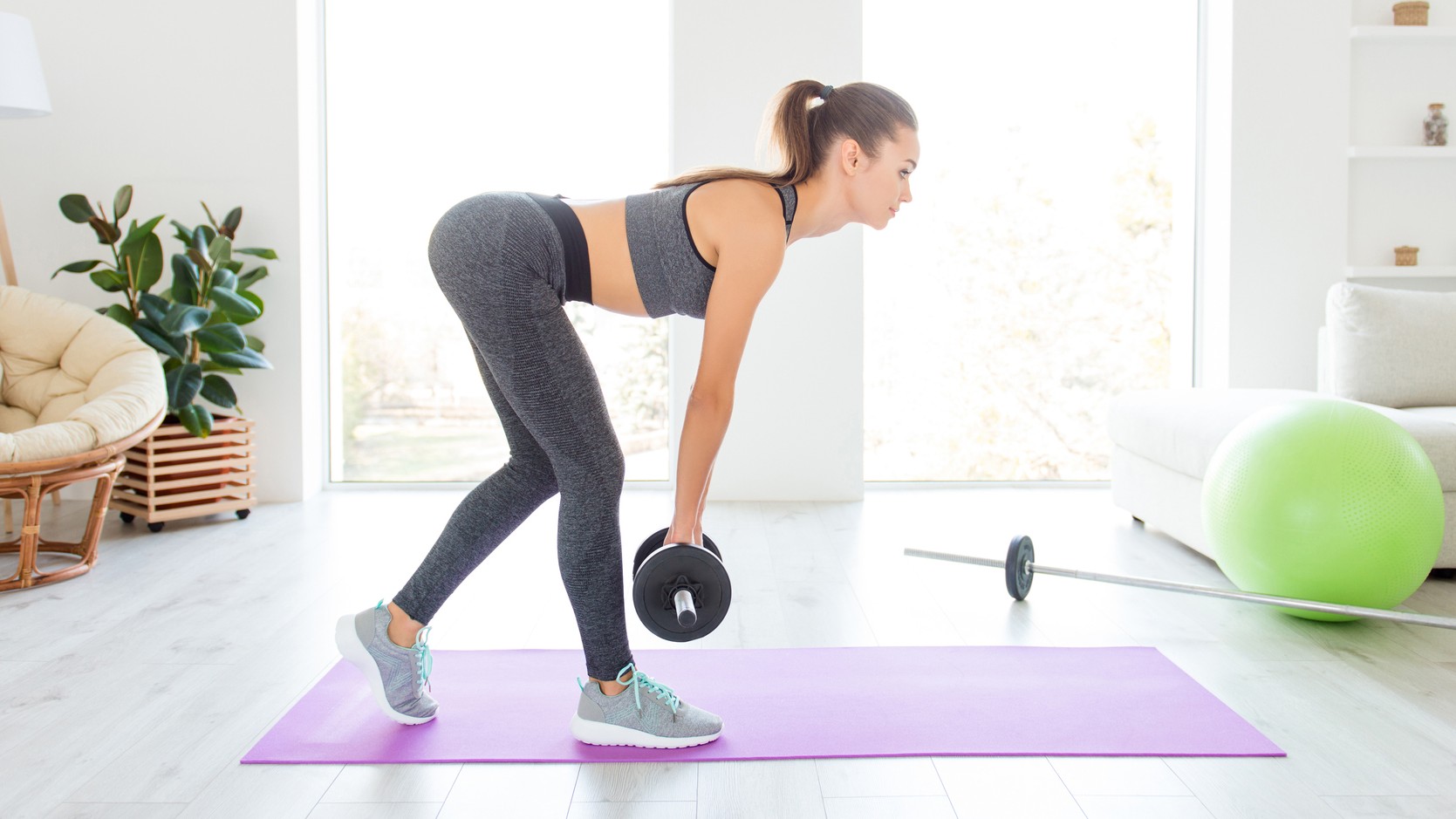
In this variation, you’ll focus on a single leg as with the one-legged version, but instead of elevating your rear leg, keep the ball of your rear foot on the floor. Holding a dumbbell in each hand, keeping your back straight and core tight, lower with a controlled motion until you feel a stretch in the hamstring of the front leg, then return to the start.
Stiff-leg Romanian deadlift
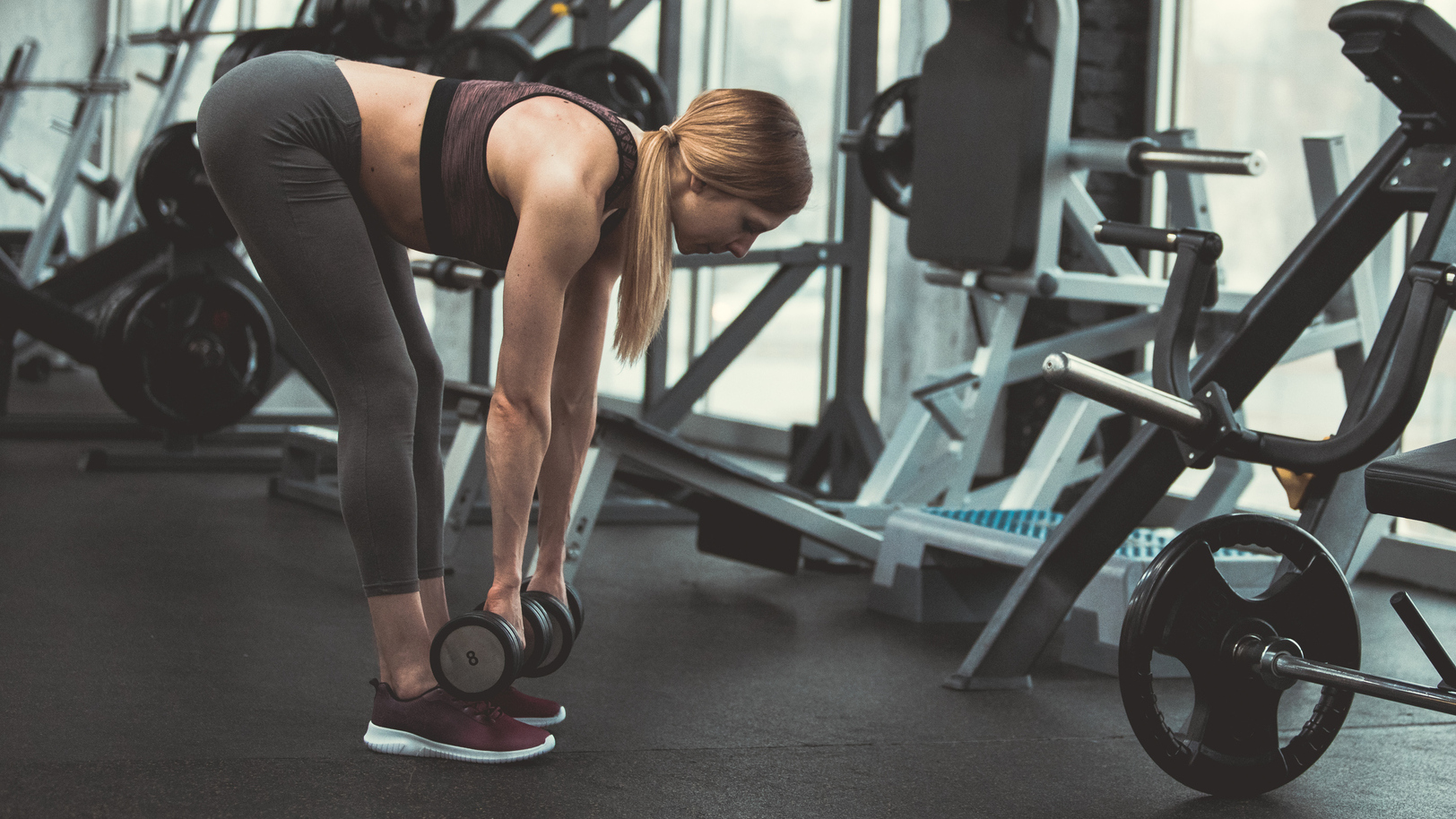
This variation on the Romanian deadlift is the ultimate test of hamstring and core strength. Whereas other variations allow a slight bend in the knees, the stiff-leg deadlift requires you to take a straight-leg stance with no bend. It may feel a little difficult to perform at first, but this leg position places the greatest emphasis on hamstring development. Just be mindful of keeping your back straight.
How To Use The Romanian Deadlift To Your Training
If you’re adding the Romanian deadlift to your workout programme it’s best to start splitting your leg workout across two different session (that’s right, two leg days!). Do quad-intensive exercises on one of the days and focus on hamstring exercises and glute exercises on the other. Avoid doing them on consecutive days otherwise you’ll put excessive stress on the stabilisers that help with leg exercises.
About Our Expert
Jeff Hoobler has more than 25 years’ experience as a cycling and strength coach. He is a certified strength and conditioning specialist through the US National Strength and Conditioning Association, and holds a degree in sports psychology and exercise science from the University of Kansas. He is also a USAC level 3 cycling coach, foundations training instructor and MAT (Muscle Activation Techniques) therapist.

Sam Rider is an experienced freelance journalist, specialising in health, fitness and wellness. For over a decade he's reported on Olympic Games, CrossFit Games and World Cups, and quizzed luminaries of elite sport, nutrition and strength and conditioning. Sam is also a REPS level 3 qualified personal trainer, online coach and founder of Your Daily Fix. Sam is also Coach’s designated reviewer of massage guns and fitness mirrors.
- Harry BullmoreStaff writer
- Nick Harris-FrySenior writer









